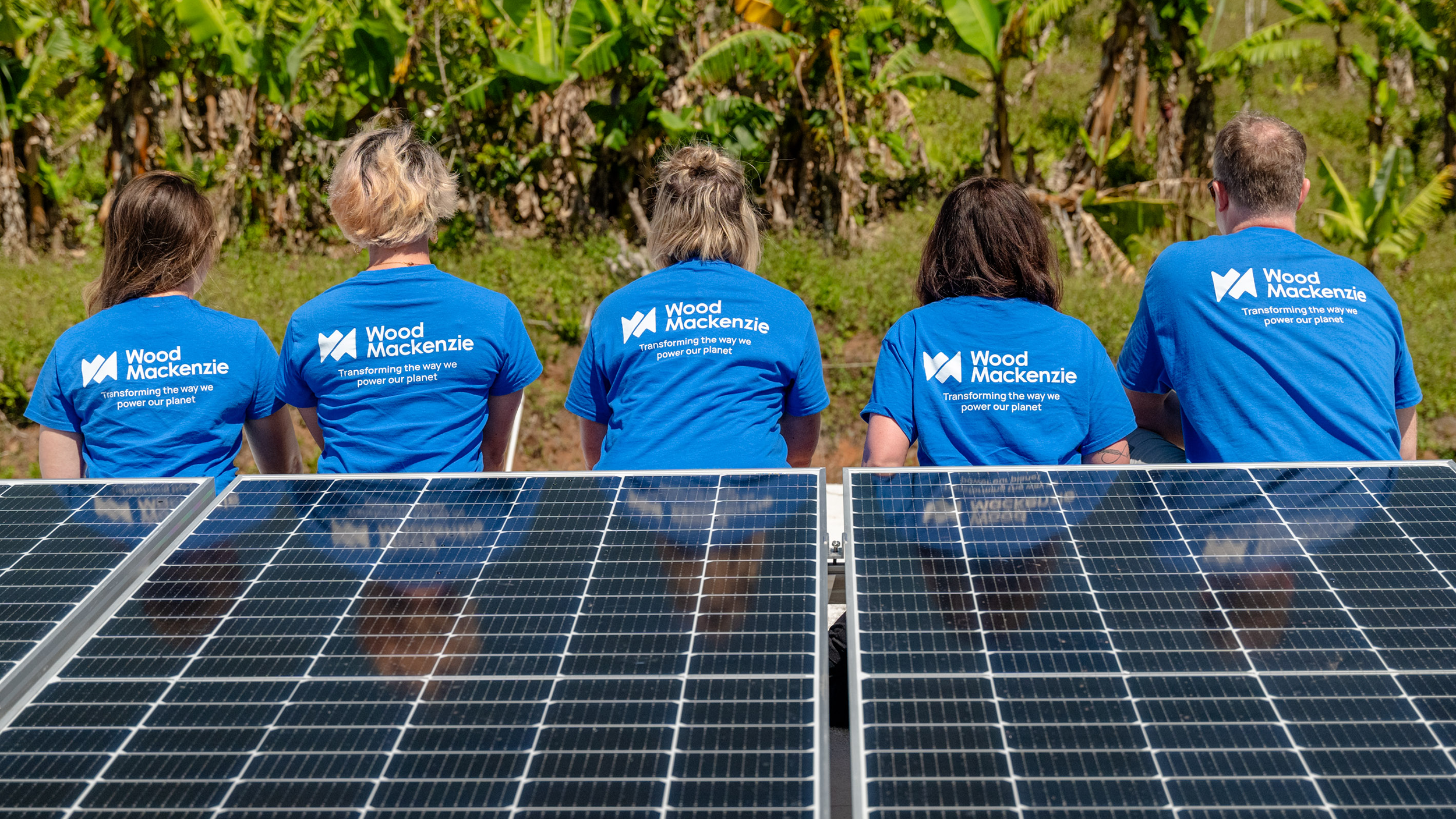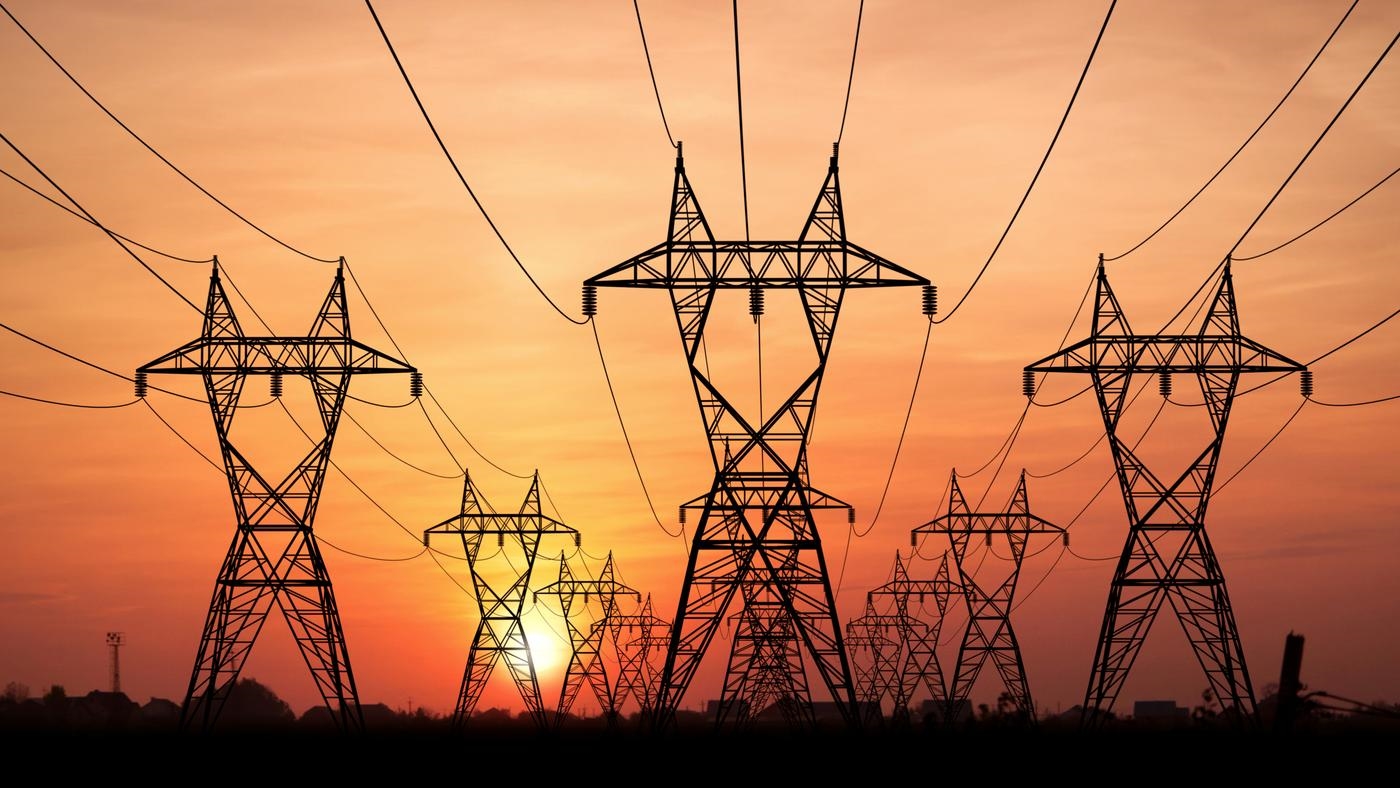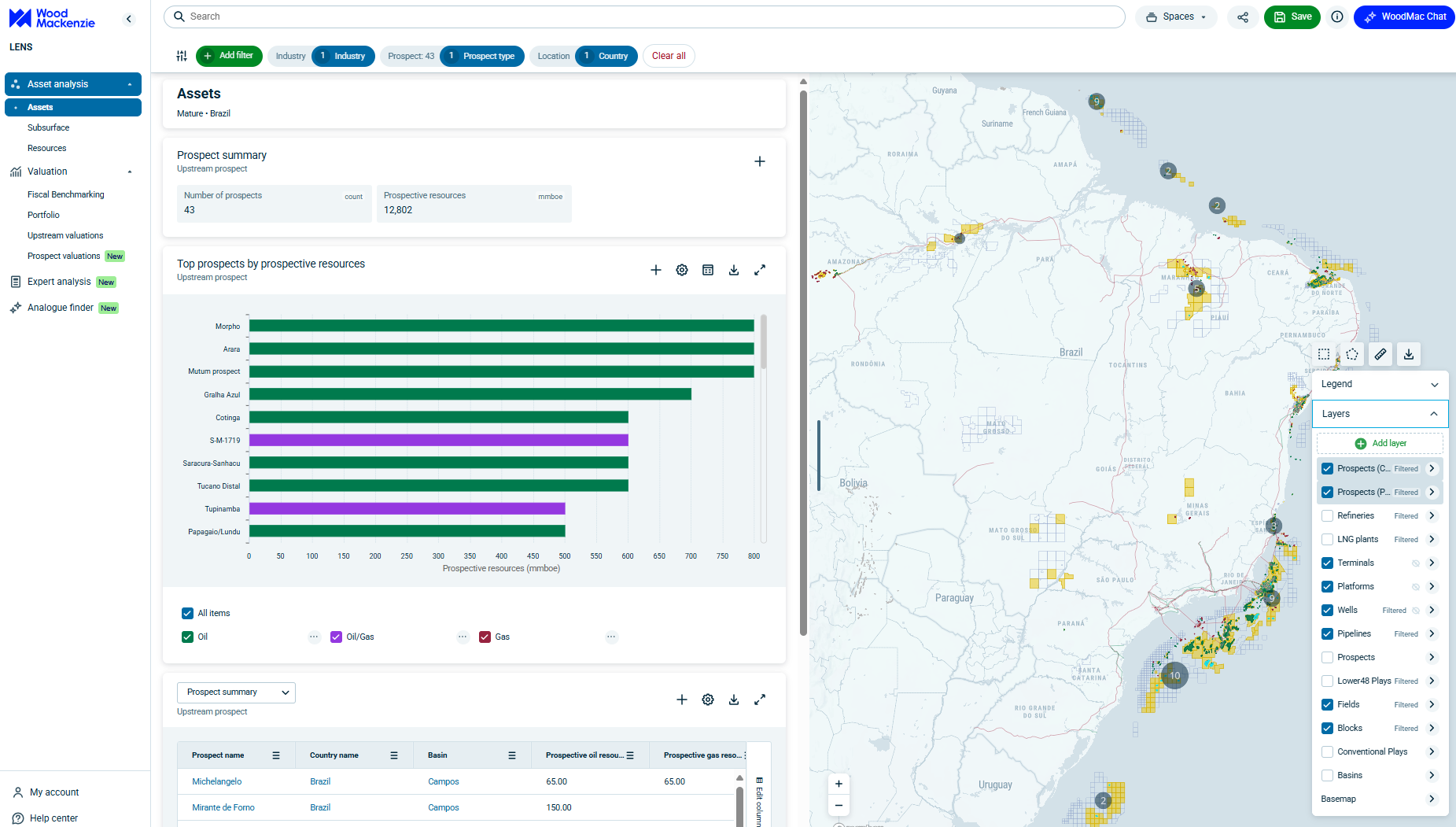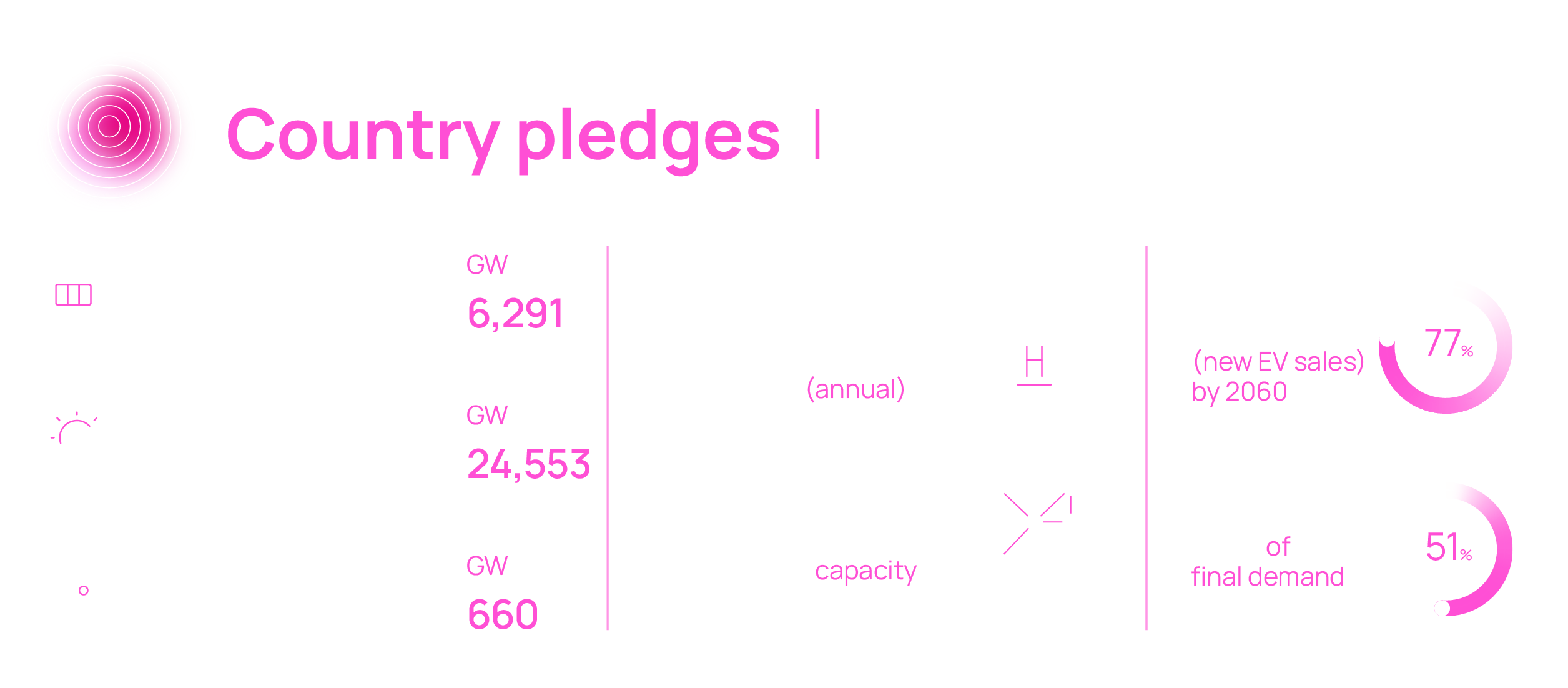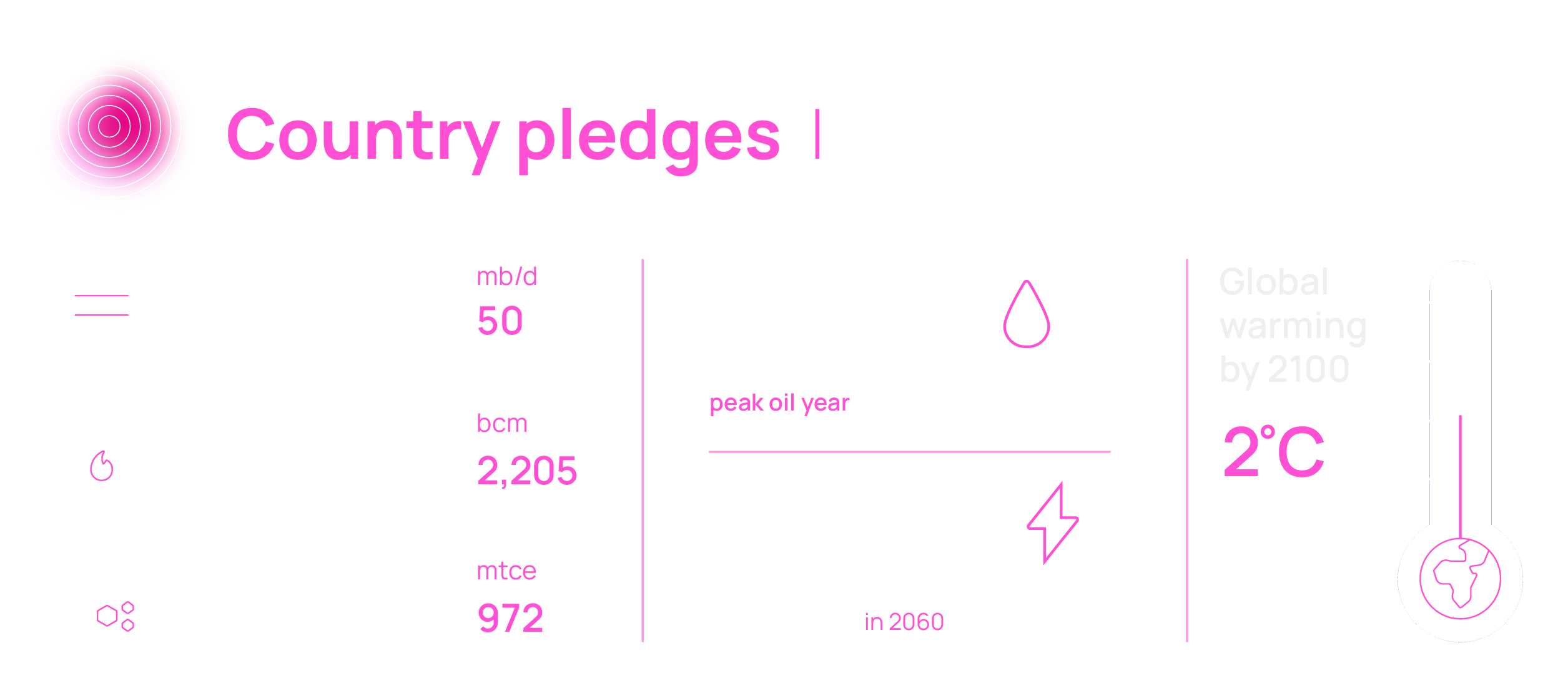

Trajectory: energy resilience
Trajectory: energy resilience
Coordinated, decisive and aligned, fossil fuel demand peaks and then declines as efficiency improves and electrification grows. Decarbonisation becomes achievable.
Outlook
Outlook
Global net zero is reached around 2060. A 2˚C pathway is achieved – but only if emissions reductions are sustained in the decades which follow.
Key features of our country pledges scenario
Policy ambition strengthens
Governments tighten rules, raise carbon prices and set firmer coal phase-out timelines. Scaled-up support for renewables, EVs and low-carbon fuels.
Capital becomes more consistent
Strengthened policy improves investor confidence and attracts investment in clean energy projects.
Fossil fuels start to contract
Oil peaks before the end of the decade. Gas plateaus in the 2030s. Coal falls sharply. Greater efficiency, electrification and changes in behaviour reduce consumption.
Renewables take the lead
Clean power becomes the backbone of new supply as investment in grids, storage and interconnection scales.
Emissions
Globally, net emissions peak in 2025 and reach 1.3 Gt CO2e by 2060.
Investment
Achieving this scenario requires cumulative capex spend of US$156 trillion to 2060.
See the bigger picture
Our energy transition outlook executive summary includes more analysis of these themes and the evolution of the energy and natural resources landscape across all four energy transition scenarios.
Fill in the form at the top of the page to get your complimentary copy.
Our energy transition scenarios to 2060
We’ve mapped out four distinct energy transition paths based on cross-sector, multi-commodity modelling
Base case
Base case
Our assessment of the most likely outcome, corresponding to 2.6˚C warming, under evolution of current policy and technology trends.
Country pledges
Country pledges
Our view of how countries’ existing long term emissions targets are achieved, roughly in line with a 2˚C warming trajectory.
Net zero
Net zero
A 1.5 °C by 2100 pathway, dependent on extraordinary levels of policy ambition, capital mobilisation and technological deployment.
Delayed transition
Delayed transition
A five-year delay in decarbonisation efforts due to geopolitical volatility and policy direction, with to a 3.1 °C pathway.
